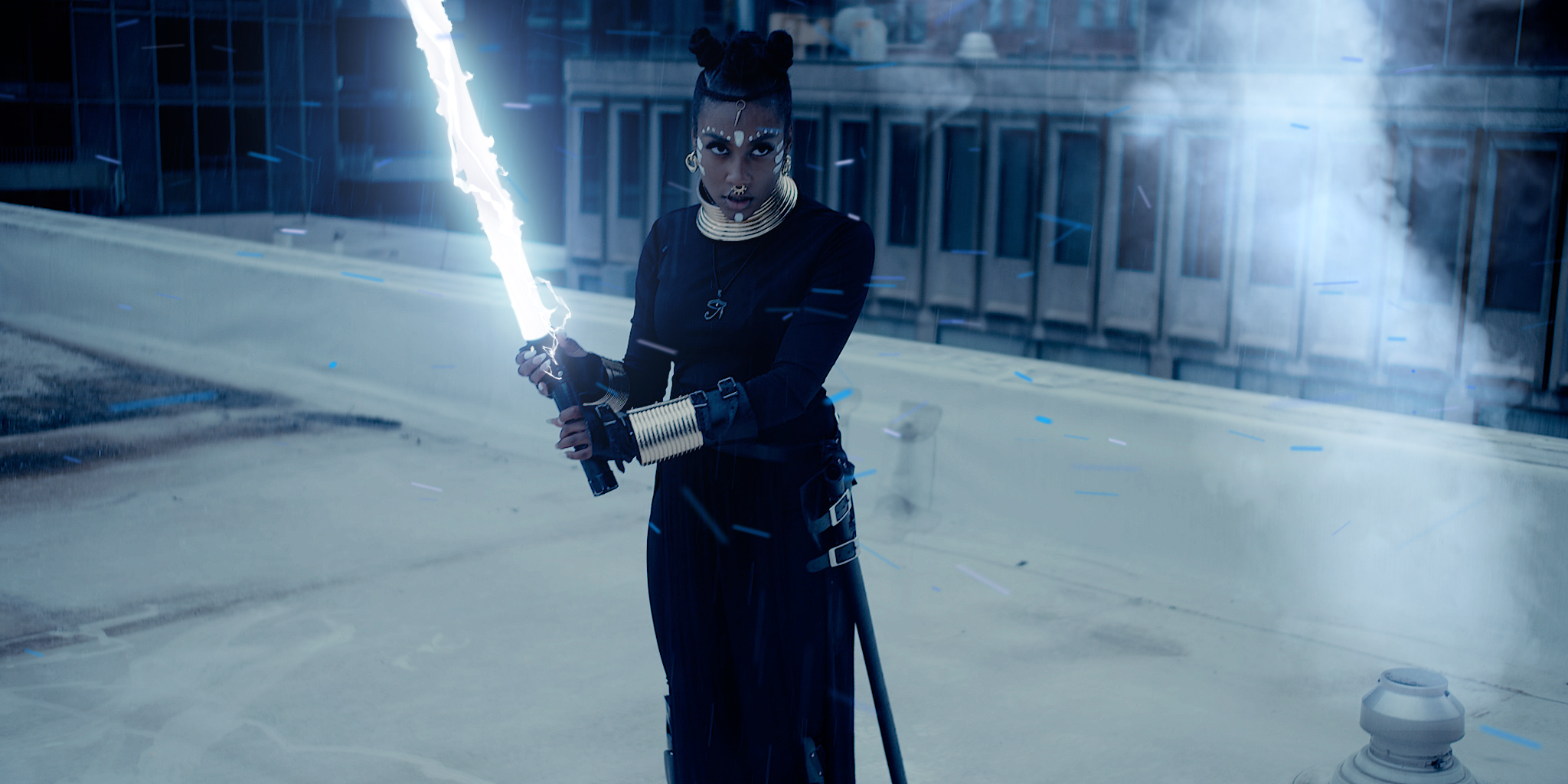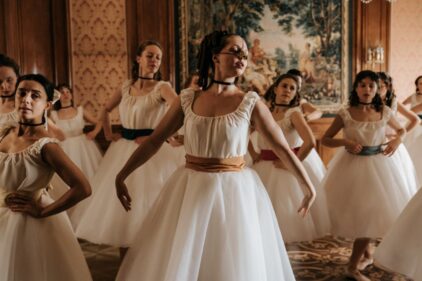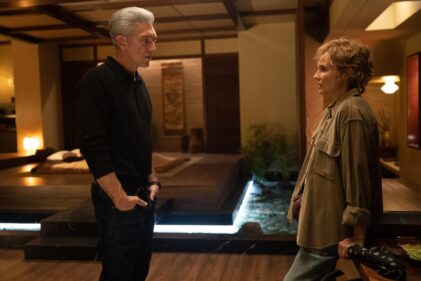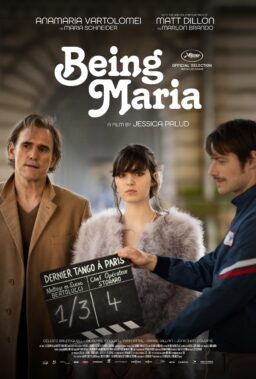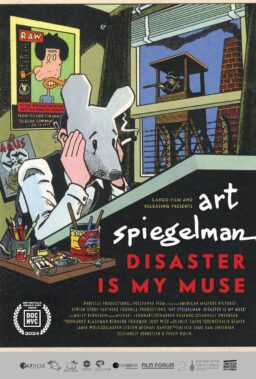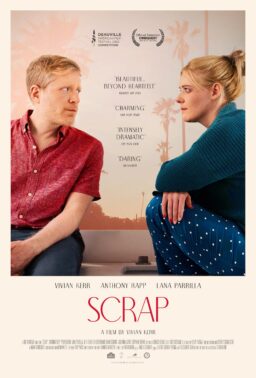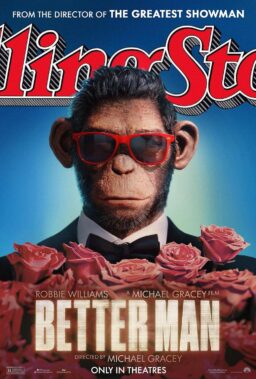What if Christopher Nolan and Spike Lee teamed-up to collaborate on a film together? The results would probably be a lot like the small micro-budget sci-fi film “Underneath: Children of the Sun” directed by St. Louis native David Kirkman.
The film incorporates many elements of Afrofuturism which is a cultural aesthetic that combines science-fiction, history and fantasy to explore the African-American experience and aims to connect those from the Black diaspora with their forgotten African ancestry.
In “Underneath: The Children of the Sun,” a slave in Little Dixie, Missouri in 1857 is thrust into an intergalactic crisis after helping an alien from a crashed spaceship. An ultra-powerful alien artifact passes through generations of bloody fingers and inheritors here on Earth, including the present, and ultimately leads to an epic battle for control.
Jordan Walker portrays the slave in the lead role in which he also appears in the film in current time as Amir. Details of why would spoil the plot of this film that adds a freshness to the time travel conceit.
It’s a complicated and involved plot brought to life by a collective of thespians that included up and coming professionals, Kirkman’s high school classmates and mutual friends. Julisa Powell who is magnetic as Princess Nibira attend high school with Kirkman and was one of the first people he talked to about the project. “She brings such a poise to the screen and is really great at taking higher concepts and grounding them with her performance,” explains Kirkman.
The film immerses the audience deeply in Afrofuturistic aesthetics and it’s a universe clearly inspired by the evolving concept of Afrofuturism. Kirkman created a fictional planet populated by Black people with them in charge which is the fundamental element of Afrofuturism. The set design is futuristic, the costumes as well but with traces of Afrocentric regality culled from traditional elements western African clothing along with make-up and natural hair-stylings that pay homage to African heritage and culture. All elements that support the Afrofuturism ideology.

The central idea of the film was fueled by Kirkman’s own experiences, particularly the events that happened in his hometown during the summer of 2014.
The fatal shooting of Michael Brown by Ferguson Police Department officer Darren Wilson ignited an uprising in Ferguson, Missouri. It was an international story that sparked marches on the streets of Ferguson for weeks. The protests were a turning point for many including a young ambitious filmmaker.
“Growing up in Ferguson, I was the kid that was always attracted to stories that offered new perspectives,” says Kirkman. “I would organize friends on my block into groups and divide them into the “bad side” and “good side” for lightsaber battles with tree twigs and plastic baseball bats.”
The killing of Brown, an unarmed 18-year-old Black male changed everything for Kirkman.
“The events of the Ferguson uprising from 2014 to 2015 was a turning point that sparked something within me,” says Kirkman. “Being on ‘Ground Zero’ with my friends and peers, protesting the injustices, I witnessed firsthand my community’s strength and the fight for justice. As someone with a passion for sci-fi and fantasy, it made me feel more of a responsibility to use my voice and talents to make a difference and connect those stories to the real world.”
Born from the trauma and chaos was “Underneath: Children of the Sun.”
“‘Underneath’ really is a manifestation of my love for science fiction and Afrofuturism,” says Kirkman. “This story dives into the complexities of identity, heritage, and futuristic possibilities, reflecting both my personal journey and my aspirations to have something meaningful to say to the world.”
“Underneath; Children of the Sun” references both contemporary and historical forms of African culture as material for a futuristic narrative.
“Science fiction has always been a huge influence in my life,” says Kirkman. “Even as a kid, I was drawn to the possibilities sci-fi presented, the ability to imagine worlds beyond our current reality and explore profound philosophical questions through storytelling. This genre has always had a unique way to address complex issues, like how ‘Star Wars’ was commentary on war and terror resistance, which aligns perfectly with my goals as a filmmaker.”
“Afrofuturism is a powerful tool for reimagining the future through a lens that centers Black experiences and creativity,” explains Kirkman. “It allows us creatives to break free from the often one-dimensional portrayals of Black life in mainstream media. So by emphasizing Afrofuturism, I’m creating a space where Black people are not only present but are central to the narrative, shaping their own destinies and exploring possibilities that go beyond traditional borders. We’re reclaiming our past, celebrating our present, and envisioning a future where we are the architects of our own stories.”
The journey to produce “Underneath: Children of the Sun” began after Kirkman found success with several short films that went viral on YouTube.
“Underneath: Children of the Sun” is an ambitious film. It’s Kirkman’s first feature and looks and feels remarkably big considering Kirkman’s lack of experience and lack of resources. Produced for $150,000 there are moments where “Underneath: Children of the Sun” looks as polished as a Marvel movie. Like “Black Panther” Kirkman presents a viewpoint of Afrofuturism driven mostly through the costumes, hair and make-up. The look of Blackness heavily signals the viewpoint and cinematic verve as it shifts between a distant planet called Apkallu and the antebellum south in the 1850s.
“It was a conscious decision to place Black people at the forefront of my sci-fi narrative,” says Kirkman. “Historically, Black people have been underrepresented in this genre, often relegated to minor or stereotypical roles. By centering Black characters in sci-fi, we’re challenging these conventions. It’s about showing that we belong in these spaces and that our experiences and imaginations are just as important to the genre.”

Like most, Kirkman was first introduced to the theory of Afrofuturism in 2018. Dr. Reynaldo Anderson, a professor from Harris-Stowe University attended the premiere of his short film “Static Shock.” The professor told Kirkman that what he had created was Afrofuturism. Kirkman had no idea what Afrofuturism was but soon learned after screening his short film in Europe thanks to Dr. Anerson.
“I was introduced to the Afrofuturism community at conferences held in London and Berlin,” says Kirkman. “There, I met Black artists and scholars from Europe and America who had been working in the movement for years, long before it gained mainstream recognition with the release of ‘Black Panther.’”
Dr. Anderson taught Kirkman the core tenets, symbolism, and themes of Afrofuturism which is the reclaiming of Black identity, revisioning the past and creating a futuristic viewpoint through a Black cultural lens. “It was an intensive course that required a lot of reading and pulling historical connections, but it influenced my understanding and approach to storytelling in a life changing way,” says Kirkman. “This honestly concretized my commitment to using Afrofuturism as a means to explore and highlight the narratives of Black resilience, creativity, and hope.”
Channeling his inner Robert Rodriguez, Kirkman was literally a ‘one man band’ on set. Kirkman wrote, directed, shot, edited and composed the score for the film.
The entire process, from initial concept to final cut, took Kirkman six years. He started in 2018 after his short concept film “Static Shock” went viral. He continued creating other short films while preparing to tackle his first feature. “There was a lot of extensive research, writing, pre-production, filming, and post-production,” explains Kirkman. “It was a labor of love that required so much dedication and collaboration from everyone involved.”
To make the world and locations of the film feel as expansive and real as possible, Kirkman minimized the use of blue/green screen shots, using only five in the entire film. Kirkman and his crew filmed in Colorado at the Great Sand Dunes and the Rocky Mountains. The rest of the film was shot in St. Louis, filming at locations like President Ulysses Grant’s Estate, Garden of the Gods (which served as the backdrop for Brazil), Cahokia Mounds, and various beaches near the Mississippi River. These locations were chosen to ground the story in a tangible sense of place that resonates with the movie’s themes.
The film has played at several mid-level film festivals including the Afrofuturism Festival at Carnegie Hall, St. Louis International Film Festival, Kansas City International Film Festival, Capital City Film Festival and Juneteenth Film Festival. Audiences have resonated deeply with the themes and appreciated the unique blend of genres showcased. It’s sparked conversations about identity, history, and the future. “It’s been incredibly rewarding to see how our stories have touched people and inspired them to think differently about the narratives we create,” says Kirkman.
“During a Q&A at our New York Film Academy screening, someone asked, ‘How does it feel to be the first creative to put images of Black people on the big screen in the way that you did?’ “Initially, the question threw me off because, to me, I’m just creating stories that keep me engaged and thinking. However, this question made me realize the impact of our work. It’s not just about telling stories; it’s about reshaping perceptions, challenging norms, and opening up new possibilities for Black representation in cinema. This realization has been both humbling and empowering for me.”
As the ideology of Afrofuturism continues to evolve its impact on storytelling will allow more Black creatives to reimagine, reinterpret, and reclaim the past and present for a more empowering future. “Underneath: Children of the Sun” is the perfect example of those possibilities.
